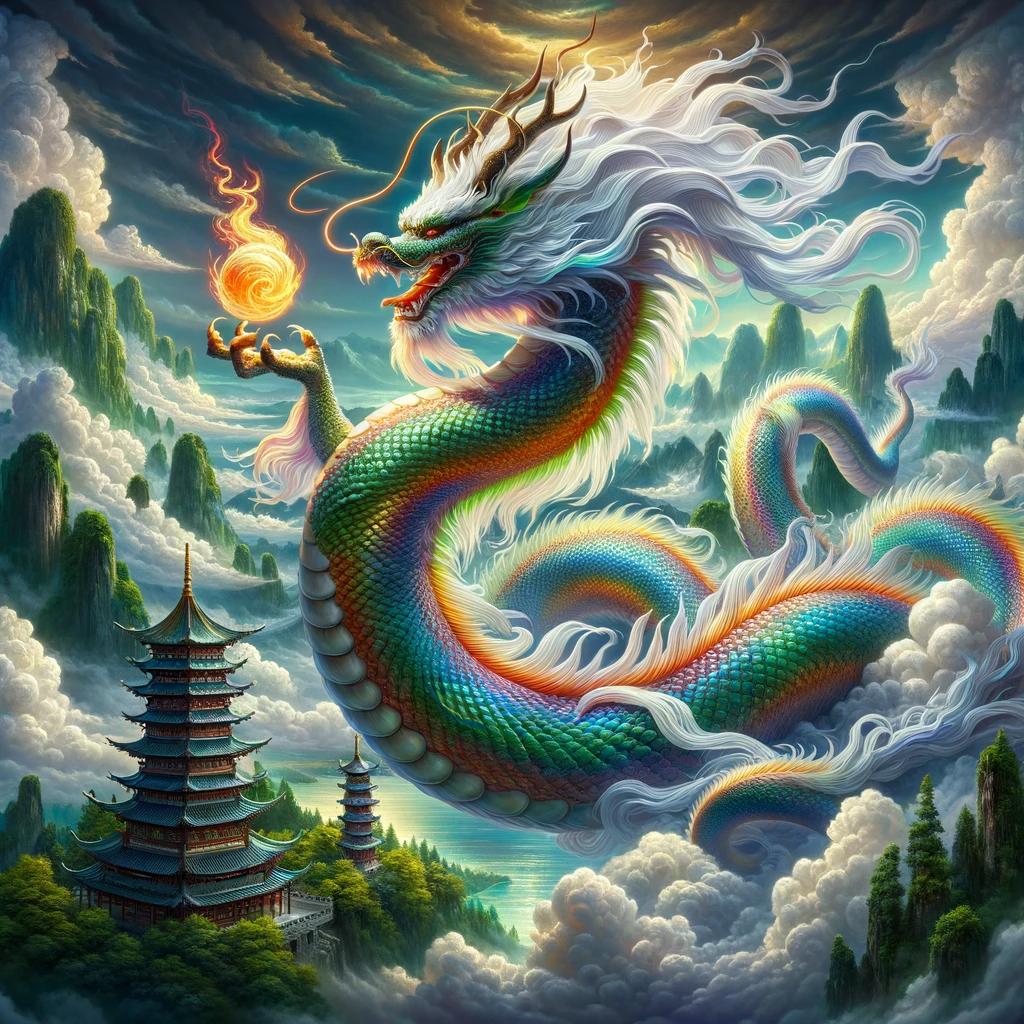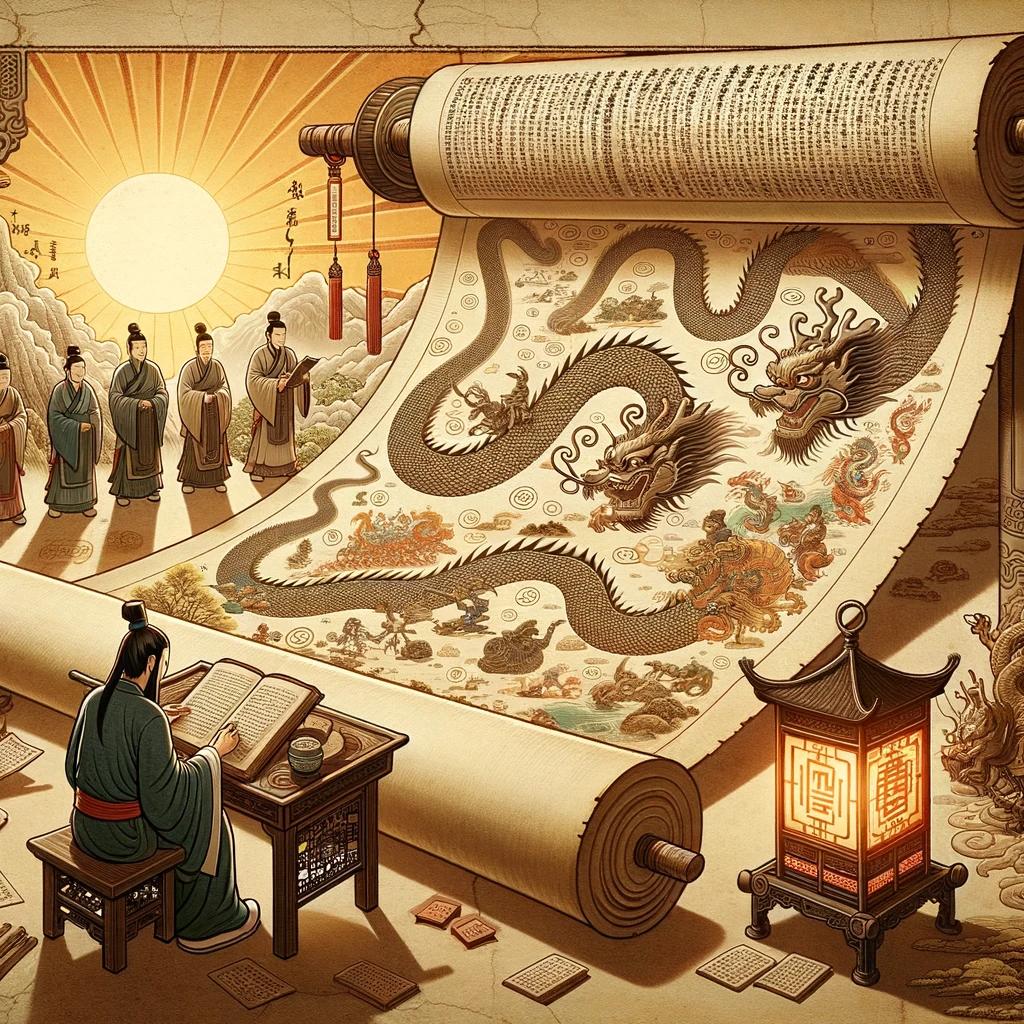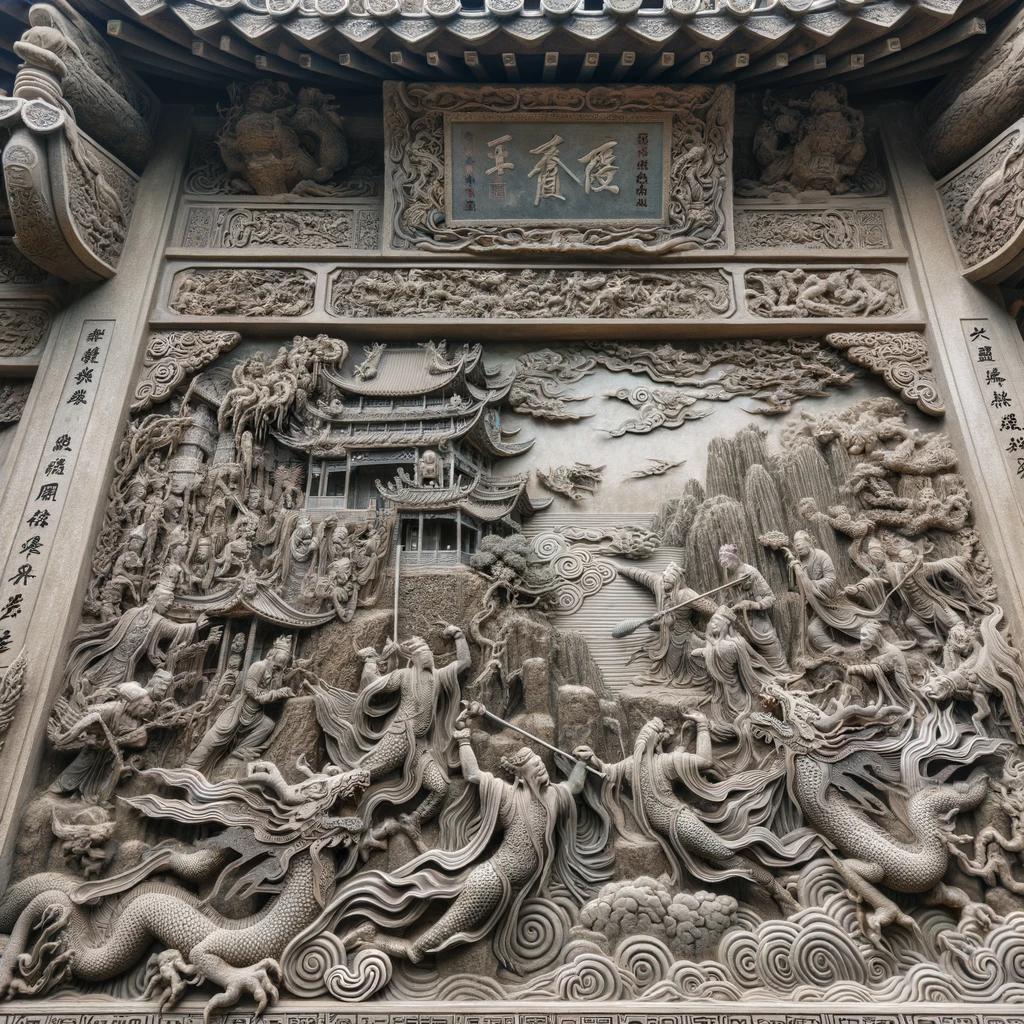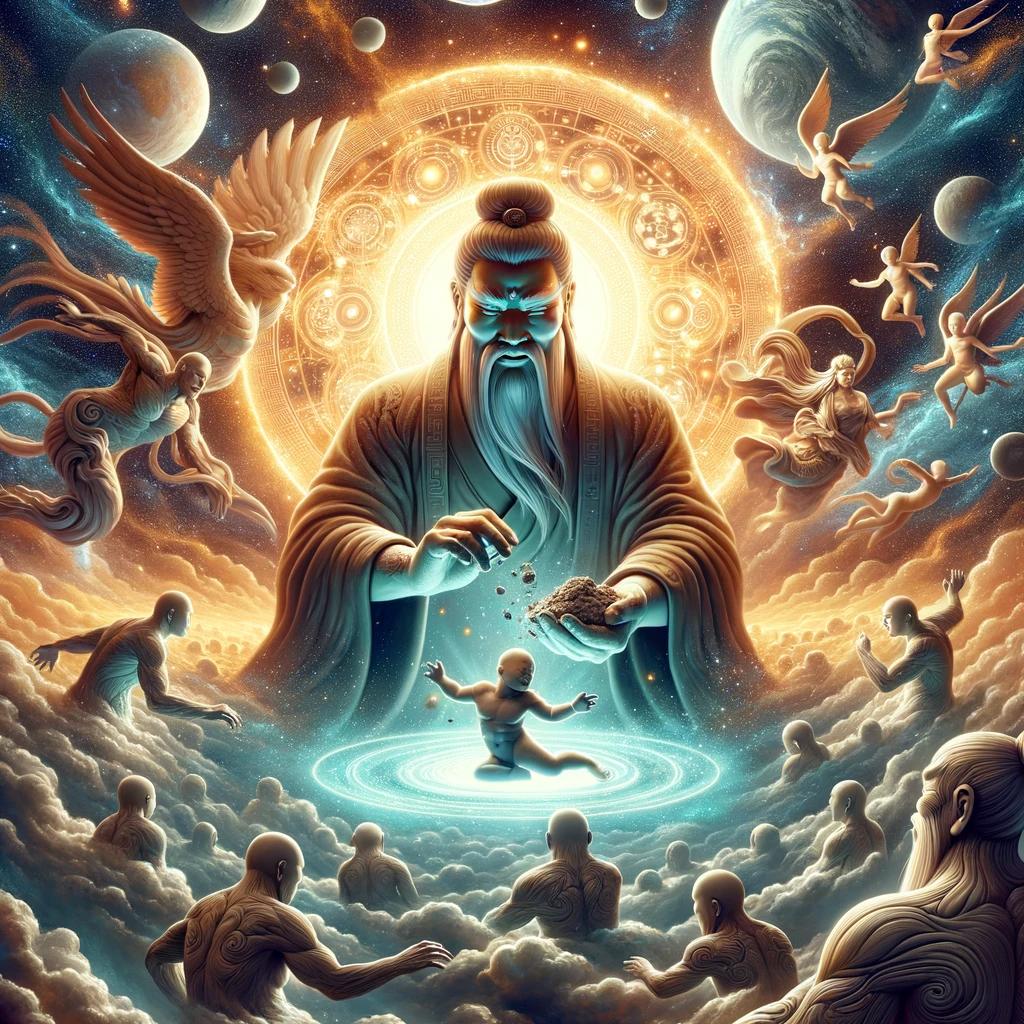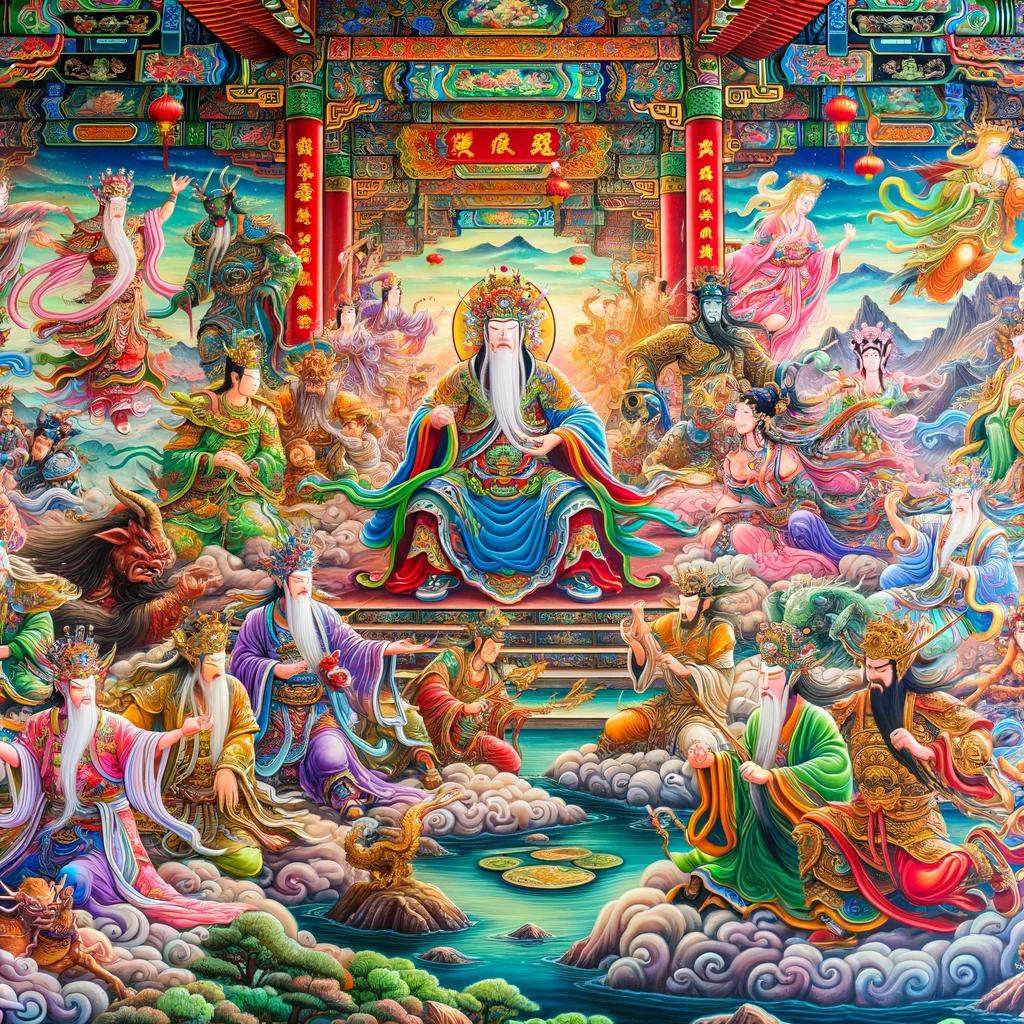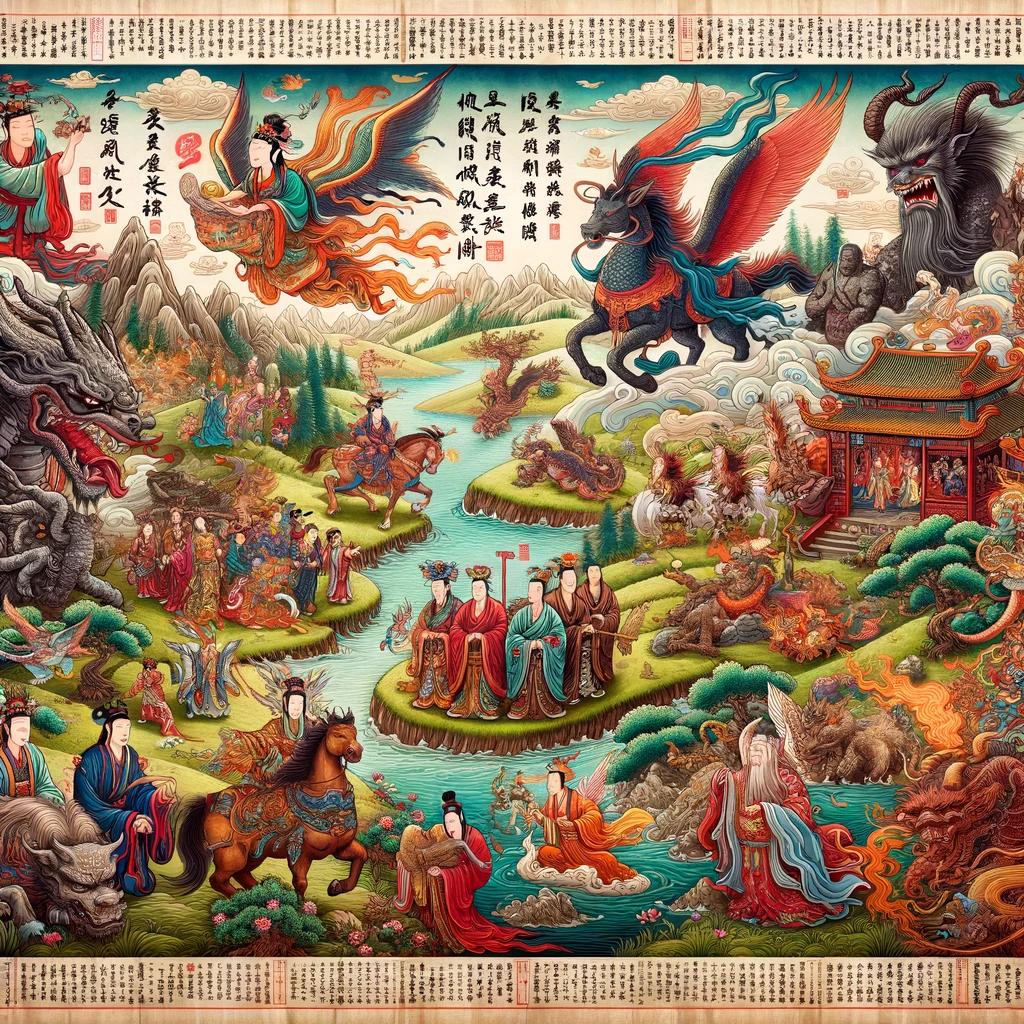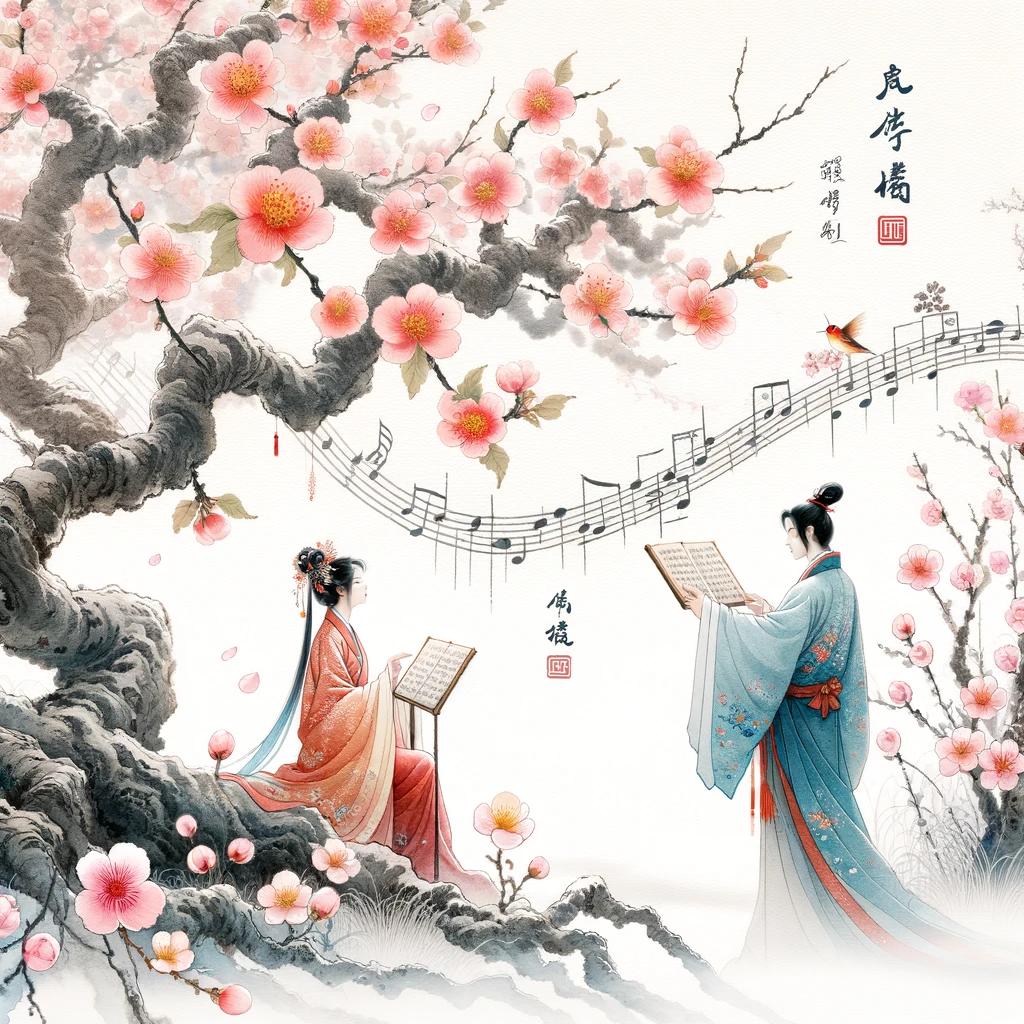Tianlong Dragon: Exploring the Mythical Celestial Dragons in Chinese Culture
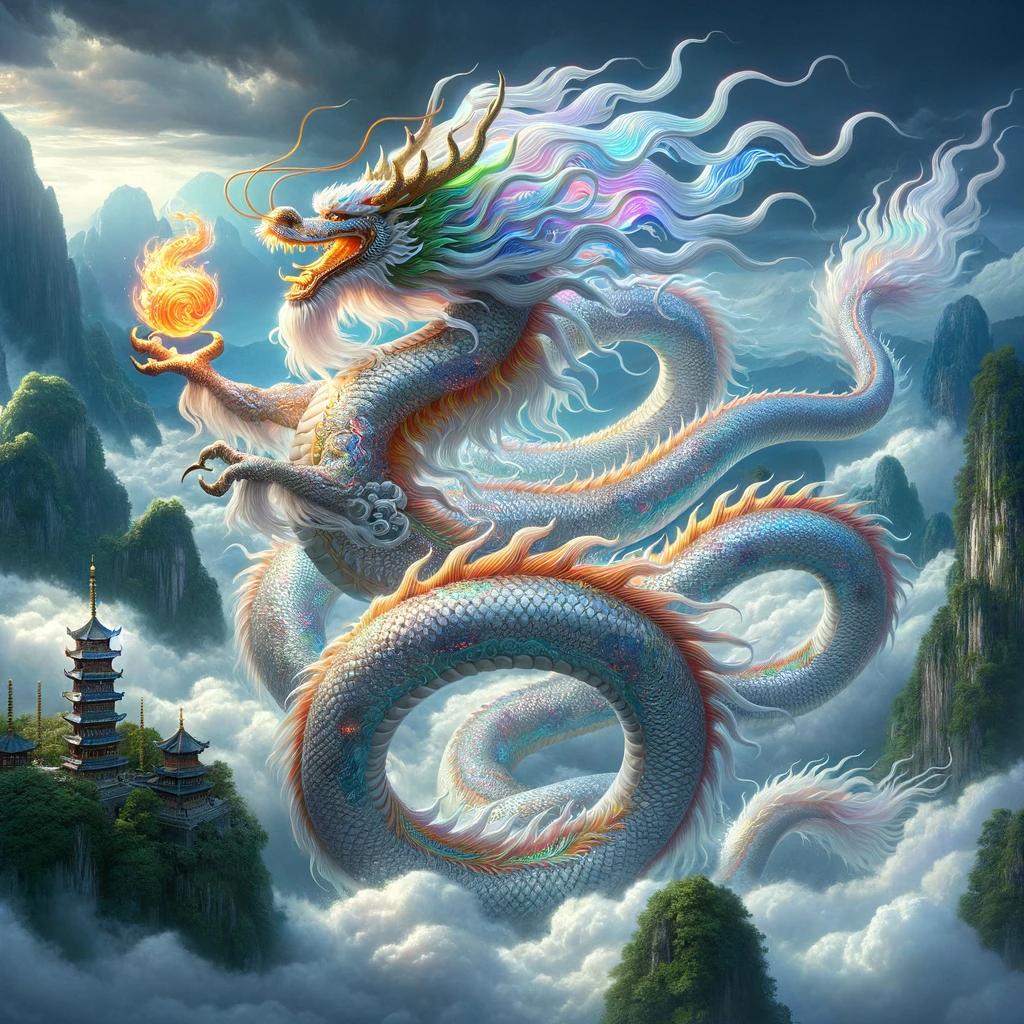
The Tianlong dragon holds a prominent place in Chinese mythology, revered for its celestial nature and significant roles. This article explores its origins, functions, and symbolism in Chinese folklore, as well as its comparison to dragon mythologies in other Asian cultures.
The spiritual and symbolic meanings of the Tianlong dragon, its association with deities, and its influence in Chinese art and literature are also examined. Furthermore, we delve into its role in Buddhist beliefs, particularly as Nāgas, and discuss its implications and interpretations in contemporary society.
Tianlong Dragon in Chinese Mythology
The Tianlong dragon holds a significant place in Chinese mythology, with a rich tapestry of origin stories and legends surrounding its existence. It is believed to have emerged from the heavens, embodying celestial power and divine strength.
According to mythological accounts, the Tianlong dragon was born from the breath of gods and possessed awe-inspiring abilities.
Origin and Legends Surrounding Tianlong Dragon
Various legends surround the origin of the Tianlong dragon. One popular tale states that it was born when a dragon, transformed into a divine being, ascended to the heavens and received the title of the Heavenly Dragon.
Another legend claims that the Tianlong dragon originated from the depths of the cosmic ocean, embodying the elemental forces of water and sky.
In these stories, the Tianlong dragon is depicted as a celestial creature with a majestic appearance, adorned with vibrant scales that shimmer like precious gemstones.
It possesses wings that enable it to soar through the heavens, embodying its celestial nature. These legends further emphasize the dragon’s role as a guardian of the celestial realms.
Functions and Roles of Tianlong Dragon in Chinese Folklore
The Tianlong dragon plays various significant roles in Chinese folklore.
It is believed to be a symbol of power, protection, and good fortune. According to ancient beliefs, the Tianlong dragon had the vital role of guarding the palaces of the gods, acting as their divine chariot puller, and ensuring the safety of their celestial abodes.
Furthermore, the Tianlong dragon was associated with controlling and influencing natural elements. It held authority over water and was believed to govern the courses of rivers and seas, maintaining the balance of aquatic ecosystems.
Additionally, it was believed to have control over rain and wind, influencing weather patterns and ensuring bountiful harvests.
Tianlong Dragon in Chinese Astrology and Symbolism
Chinese astrology recognizes the Tianlong dragon as a symbol of immense power and celestial energy. It is often associated with the heavens and seen as a bridge connecting the earthly realm with the celestial world.
In this context, the Tianlong dragon symbolizes the spiritual connection between humans and the divine.
Symbolically, the Tianlong dragon represents strength, wisdom, and prosperity. It is a revered creature that is believed to bring good fortune, abundance, and protection.
Its presence in Chinese art, literature, and symbolism reflects the profound impact of this mythical creature on the Chinese culture and collective imagination.
Comparison with Other Dragon Mythologies
The comparison between Chinese and Japanese dragons reveals fascinating cultural distinctions. The Chinese dragon is depicted as a benevolent creature associated with wisdom, power, and good fortune. In contrast, the Japanese dragon often carries a more sinister connotation, as a symbol of chaos and destruction.
Chinese Dragon vs. Japanese Dragon: Cultural Distinctions
Chinese dragons are known for their long, serpentine bodies with elongated whiskers and antlers. They are considered aerial beings, associated with the elements of water and air. On the other hand, Japanese dragons have more stylized and scaled bodies, with claws and wings.
They are often associated with water, symbolizing natural disasters such as floods or tsunamis.
In Chinese culture, dragons are revered and seen as auspicious creatures, celebrated in festivals and artwork. They are believed to bring good luck, prosperity, and rain for bountiful harvests.
Japanese dragons, however, are seen as more fearsome creatures, often associated with sea creatures and monstrous beings.
Tianlong Dragon vs. Heavenly Dragon: Interpretations and Representations
While both the Tianlong dragon and the Heavenly dragon are celestial beings in their respective mythologies, their interpretations and representations differ. The Tianlong dragon, as a Chinese celestial dragon, is depicted as a guardian of heavenly palaces and a bearer of chariots for gods.
It symbolizes power, nobility, and protection.
On the other hand, the Heavenly dragon, known as Ryūjin in Japanese mythology, represents the ruler of the ocean and the divine authority over water. It is often depicted with a human-like face and a dragon’s body, believed to govern the tides and control the weather.
The Heavenly dragon carries a sense of awe-inspiring might and control over natural forces.
Similarities and Differences between Asian Dragon Mythologies
While Chinese and Japanese dragon mythologies share some similarities, such as their association with water and their portrayal as powerful, legendary creatures, there are notable differences in their symbolism and cultural interpretations.
The Chinese dragon is often seen as a symbol of imperial power, used extensively in Chinese art, architecture, and traditional celebrations. It also has a strong connection to the ancient Chinese philosophy of Yin and Yang, representing the harmonious balance of opposites.
In contrast, the Japanese dragon is more closely tied to mythology surrounding water and the ocean. It can be both a symbol of calamity and a force of protection, depending on the context.
Japanese folklore also attributes different elemental traits to various dragon types and emphasizes their role in guarding treasures or sacred places.
- Chinese dragons are associated with the blessings of rain and good fortune.
- Japanese dragons are often depicted as protectors of sacred sites and powerful forces of nature.
In summary, the comparison between Chinese and Japanese dragons illuminates the distinct cultural perspectives and interpretations of these mythical creatures.
While both hold immense significance in their respective traditions, they embody different qualities, symbolism, and roles within their mythologies.
Spiritual and Symbolic Meaning of Tianlong Dragon
The Tianlong dragon holds deep spiritual and symbolic significance in Chinese culture. As a divine creature, it is closely associated with deities and celestial beings.
Divine Nature and Association with Deities
The Tianlong dragon is believed to possess great power and wisdom, often seen as a divine creature capable of bridging the gap between humans and the celestial realms.
It is associated with various deities, acting as their protector and messenger. This divine connection highlights the dragon’s esteemed status in Chinese mythology.
Influence of Tianlong Dragon in Chinese Art and Literature
The Tianlong dragon has left an indelible mark on Chinese art and literature.
Its image can be found in ancient paintings, sculptures, and architectural designs. In literature, the dragon is often depicted as a symbol of good fortune, strength, and prosperity. Its portrayal in these creative expressions reflects the reverence and admiration for the dragon in Chinese culture.
The Significance of Tianlong Dragon in Modern Culture
Even in modern times, the Tianlong dragon continues to captivate people’s imaginations. Its symbolism has become intertwined with the Chinese national identity and is frequently featured in celebrations, such as the Chinese New Year and other cultural festivals.
The dragon’s image has also permeated popular culture, appearing in movies, video games, and various forms of entertainment, where it represents mystical power and awe-inspiring mythological creatures.
Role of Tianlong Dragon in Buddhist Beliefs
The Tianlong dragon holds a significant place in Buddhist beliefs, particularly within the Chinese Buddhist tradition.
This section explores the connections between the Tianlong dragon and the heavenly serpent deities known as Nāgas in Buddhist tradition.
Nāga: Heavenly Serpent Deities in Buddhist Tradition
In Buddhist mythology, Nāgas are regarded as celestial serpent deities that play important roles in protecting the Dharma. They are often depicted as half-human and half-serpent beings, symbolizing their divine nature and connection between the earthly and heavenly realms.
Nāgas are worshiped and revered for their wisdom, power, and association with water, which is seen as a symbol of purity and enlightenment in Buddhism. They are believed to dwell in mystical realms hidden beneath lakes, rivers, and oceans, guarding great treasures and ancient teachings.
Tianlong as Nāgas: Connections in Chinese Buddhism
In Chinese Buddhism, the Tianlong dragon is considered as a manifestation or representation of Nāgas. The celestial nature and protective qualities of the Tianlong align closely with the characteristics attributed to Nāgas in Buddhist tradition.
Within the context of Chinese Buddhism, the Tianlong dragon is often depicted alongside Buddhist deities and bodhisattvas, symbolizing its role as a guardian and protector of the Dharma. Its association with celestial beings and its depiction in artwork and sculptures further reinforces its spiritual significance in Chinese Buddhism.
Tibetan Influence and Depictions of Tianlong Dragon
Tibetan Buddhism has also had a profound influence on the depiction and symbolism of the Tianlong dragon. In Tibetan Buddhism, dragons are revered and believed to be powerful spiritual beings that reside in the sky and possess transformative powers.
The influence of Tibetan Buddhism can be seen in the artwork and iconography depicting the Tianlong dragon, often represented with vibrant colors, intricate details, and stylized features. These depictions reflect the mystical and magical qualities associated with the Tianlong dragon and its connection to the celestial realm.
Overall, the role of the Tianlong dragon in Buddhist beliefs showcases its significance as a divine and protective entity within Chinese Buddhism. Its portrayal as a manifestation of Nāgas and its rich symbolism influenced by Tibetan Buddhism adds depth to its spiritual meaning.
Implications and Interpretations in Contemporary Society
Popularity and Influence of Tianlong Dragon in the West
The Tianlong dragon has gained significant popularity and influence in Western cultures in recent years. Its rich symbolism and mythical allure have captured the fascination of people from various backgrounds. From tattoo designs to fashion trends, the Tianlong dragon has become a prominent and sought-after motif in Western societies.
Its portrayal in movies, video games, and literature has contributed to its widespread recognition and appeal. The dragon’s depiction often represents strength, wisdom, and protection, making it an attractive choice for both personal and commercial purposes.
Tianlong Dragon in Modern Iconography and Entertainment
In modern iconography, the Tianlong dragon has transcended traditional boundaries and has become a prevalent symbol in various art forms. Its stunning aesthetics and mystical aura make it a popular choice for paintings, sculptures, and digital artwork.
Additionally, the dragon’s presence can be seen in numerous video games, where it often acts as a powerful and awe-inspiring creature. Its inclusion in entertainment media, such as movies and television shows, has further cemented its status as an iconic and visually captivating symbol.
Cultural Appreciation vs. Appropriation: Discussions and Debates
The growing popularity of the Tianlong dragon in Western cultures has also sparked discussions and debates regarding cultural appreciation versus cultural appropriation. While many individuals embrace the dragon’s symbolism and incorporate it into their lives respectfully, concerns arise when the dragon’s imagery is used outside of its original cultural context.
Some argue that cultural appropriation occurs when the dragon’s symbolism is commercialized or when its significance is diluted or misinterpreted. It is essential to engage in thoughtful conversations about the respectful use and representation of the Tianlong dragon to ensure cultural understanding and sensitivity.
Overall, the Tianlong dragon’s presence and impact in contemporary society extend beyond its traditional origins. Its widespread popularity, diverse interpretations, and ongoing discussions surrounding cultural appreciation and appropriation reflect its enduring relevance and appeal in the modern world.
.











